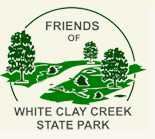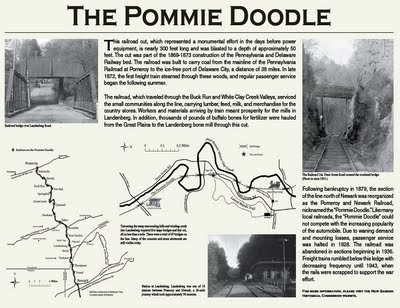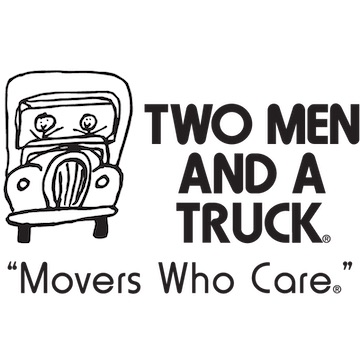Flashback: The Pomeroy and Newark Railroad
by Debbie Paruszewski Keese
In today’s world we have so much on our minds that we tend to forget the importance and the historic fascination humans have with trains. After all, trains still figure largely in the transport of goods in our country, and they still carry coal to power plants that generate electricity. In researching the historic record for descriptive images of life in the White Clay Creek Valley, I caught a little bit of the excitement and reverence felt by our earlier residents when the train came through. As I stood below the concrete supports of a long-gone railroad trestle over White Clay Creek, I found myself thinking about that train and asking, “Where did it come from? Where was it going? What exciting adventures did it hold?”
 The trestle once supported the traffic of a railroad line that was referred to as the “railroad that should never have been built.” It was known locally as the Pomeroy and Newark Railroad. The passenger car of that line was fondly called the “Pumpsie Doodle” or the “Pommy Diddle.” It ran between the towns of Pomeroy, Pa., and Newark, Del., for a 26-mile length, and on to Delaware City, Del., a total of 39 miles.
The trestle once supported the traffic of a railroad line that was referred to as the “railroad that should never have been built.” It was known locally as the Pomeroy and Newark Railroad. The passenger car of that line was fondly called the “Pumpsie Doodle” or the “Pommy Diddle.” It ran between the towns of Pomeroy, Pa., and Newark, Del., for a 26-mile length, and on to Delaware City, Del., a total of 39 miles.
Why should it never have been built? Budget constraints in building the road dictated that the bed follow the flattest grade possible, which meant that it followed the banks of the White Clay Creek, crossing and re-crossing the stream and surrounding wetlands. In its 26-mile run, there were 65 wooden bridges that were hard to maintain and very expensive to replace. When you follow the actual course of the railroad, it is mind-boggling to imagine how difficult a job it was to build this line. Building up ballast for the bed, traversing swampy areas, cutting through rock outcrops, and getting wet in the creek during winter months must have tested the endurance of the work gangs. [Continue reading…]









